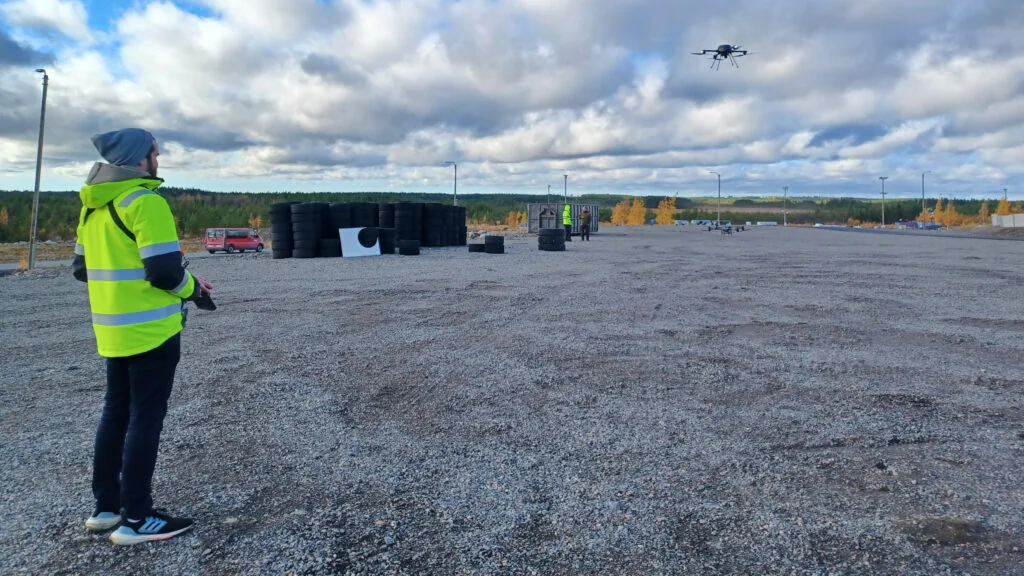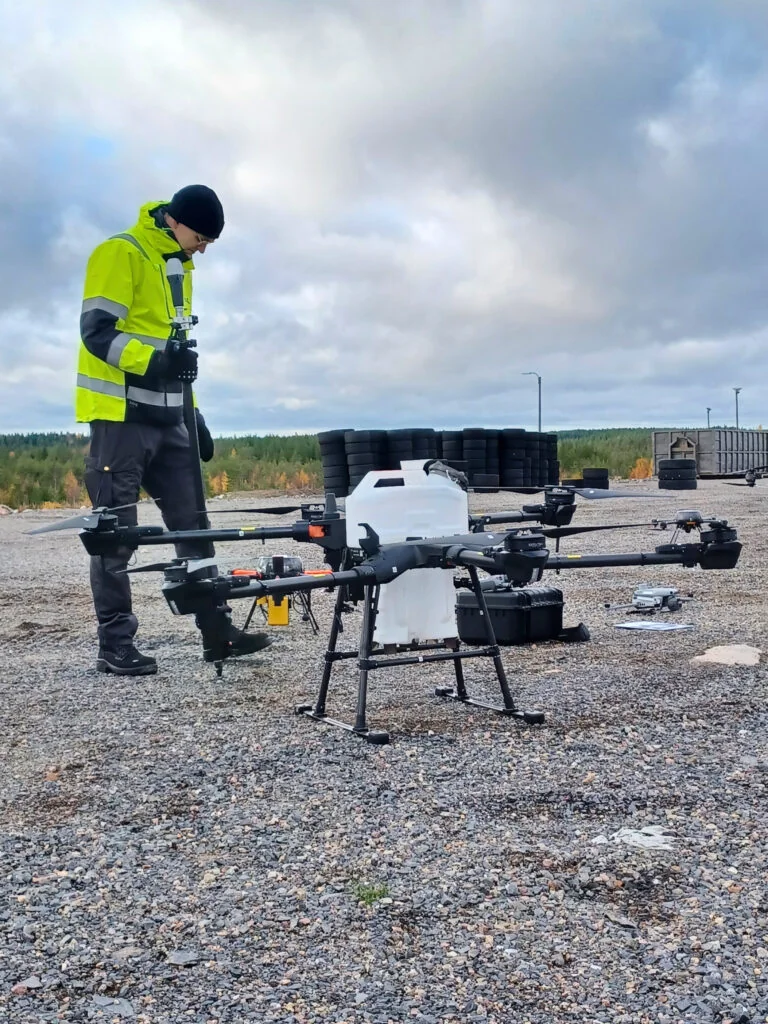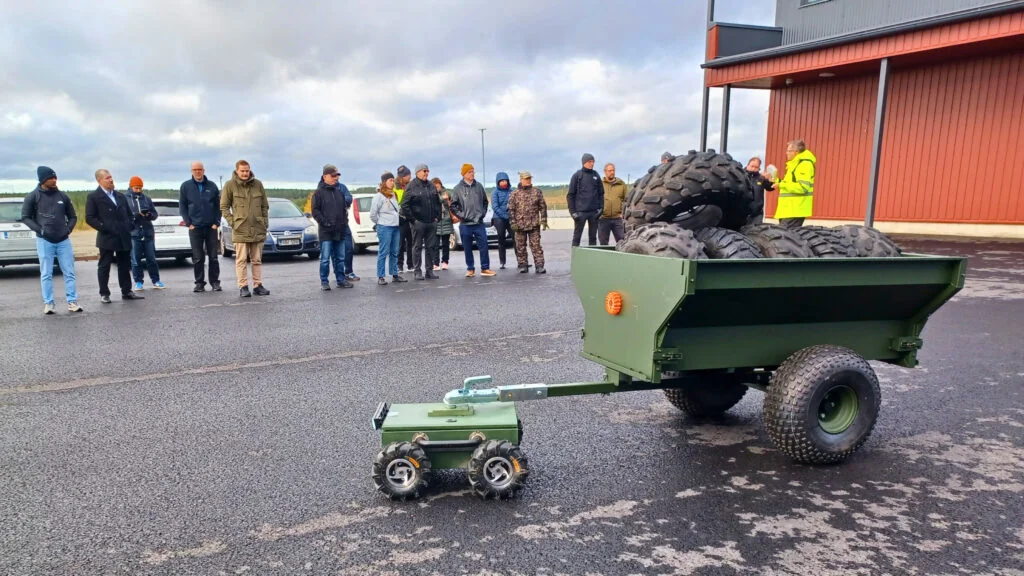Around twenty participants interested in drone technology joined the visit, where Oulu University of Applied Sciences and VTT presented their recent research and development work.
Located about 35 kilometres from Oulu city centre, OuluZone has become an important testing environment for local companies and research institutes. Alongside drones, the area is also used for testing autonomous vehicles on different tracks and conditions.

Drones in Test Use and Supporting Logistics
Oulu University of Applied Sciences is well known for its expertise in drone technology. Their Smart and Sustainable Aviation research program supports the growth of the industry related to drones and other unmanned aerial vehicles. Recently, Oulu has also been exploring the use of drones in logistics.
A drone-based pizza delivery, tested during the Oulu Housing Fair last summer, demonstrated how drones could in the future offer a fast and low-emission alternative for urban logistics. However, safety remains the top priority when operating drones in populated environments.
“The idea behind these test areas is that we can fly safely in a controlled environment — experimenting with high-altitude flights or new equipment before operating near people. The Oulu region offers excellent conditions for testing in challenging weather,” said Kimmo Paajanen from Oulu University of Applied Sciences.
Opportunities and Challenges in Agriculture

Agriculture is one of the most promising application areas for drone technology. Drones are already used for fertiliser spreading, but current legislation still restricts the use of crop protection chemicals. Regulations are, however, expected to ease soon, and the first pilot cases may take place as early as next year.
“The advantage of drones is that they don’t compact the soil or damage plants. With precise positioning, materials can be applied exactly where needed — not five metres off target,” explained Aleksi Kärnä, researcher at the Oulu University of Applied Sciences.
Farmers see strong potential in drones, but adoption is slowed by high investment costs and limited data-processing skills. Getting the necessary permits can take up to six months, and a professional drone costing around €10,000 may feel expensive if the economic benefits aren’t immediate.
“Using drones in sectors like agriculture also requires mastering the entire process, including data analysis and management. This could be a suitable project for the Location Innovation Hub to advance in collaboration with partners in the future,” suggests Antti Jakobsson, coordinator at Location Innovation Hub.
Drones Demonstrated Their Strength and Autonomy
At OuluZone, participants had the chance to see drones in action — testing how much weight they can lift, how precisely they can operate, and how far they can see. A drone could one day be used to deliver spare parts to a forest machine deep in the woods or other hard-to-reach locations. The audience was also impressed by the precision of modern drone cameras: a drone launched from OuluZone was able to capture clear images of landmarks in downtown Oulu, tens of kilometres away.

VTT presented how drones can now operate independently, performing surveillance and monitoring tasks without any on-site operator. An autonomous drone takes off from its docking station, completes its route, and returns to recharge — all on its own. The operator can monitor the live data feed remotely, even from hundreds of kilometres away. A mobile drone docking station can offer a cost-effective solution for security, construction, or industrial site monitoring.
Developers, Experimenters and Shared Learning
Participants found the day both inspiring and valuable. The event brought together professionals working with drone technology as well as other experts curious about the field’s latest developments.
“Definitely a useful event! I wanted to see what’s happening in the drone scene right now — and this day covered it well,” said Juhani Pelttari from Murata Electronics, specialising in sensor electronics.
“A truly valuable day that provided answers to many questions,” summarised Lauri Korhonen from Altisense, a company offering drone-based inventory services.
Do you have a drone-related business — or an idea you’d like to test? Get in touch with the Location Innovation Hub. Through our partners, we can provide access to dedicated drone testing environments where you can safely explore new applications and technologies.





